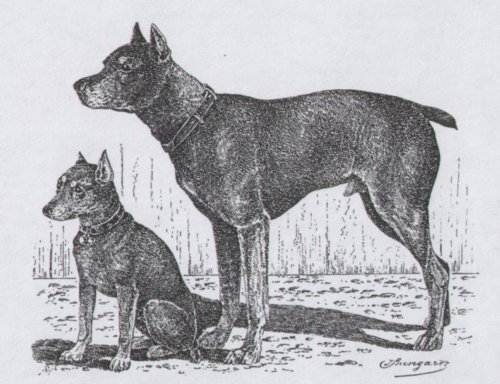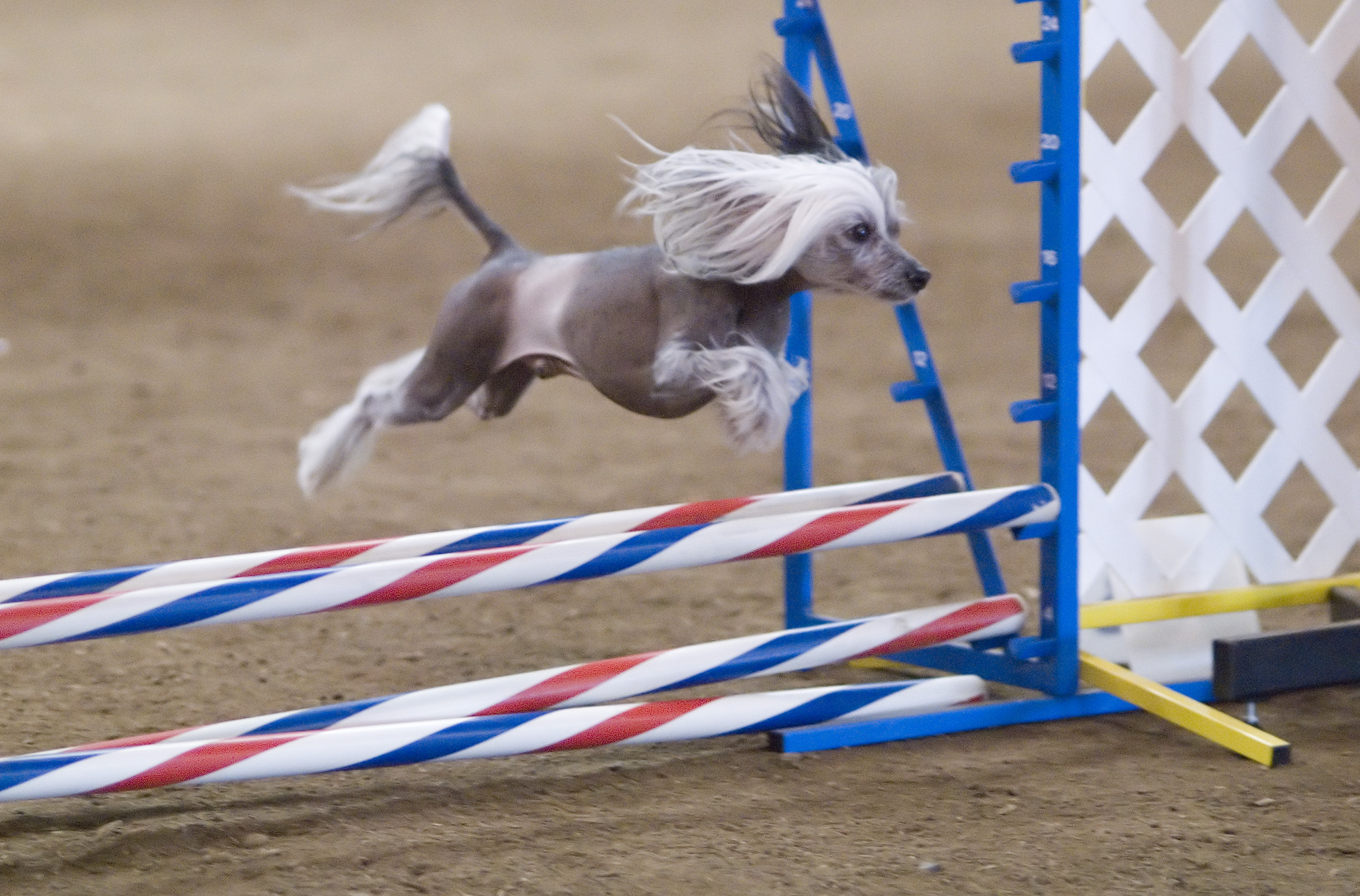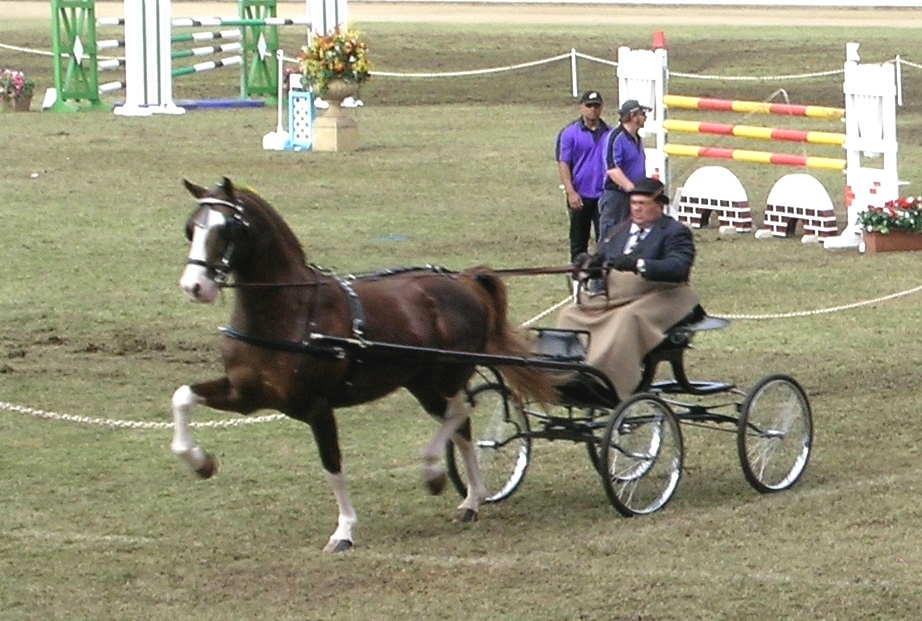|
Miniature Pinscher
The Miniature Pinscher, also known as the Zwergpinscher and Mini Pin, is a small breed of dog of the pinscher type originating in Germany. The breed's earliest ancestors may have included the German Pinscher mixed with Italian greyhounds and dachshunds. Historical artifacts and paintings place the Miniature Pinscher as a very old breed, but factual documentation began less than 200 years ago, leaving its actual origins to debate. Many historians and those who have researched the background of the breed agree that this heritage is most likely correct, adding the shorthaired German Pinscher to the family tree. The international kennel club, the Fédération Cynologique Internationale, lists the Miniature Pinscher in Group 2, Section 1.1 ''Pinscher'', along with the Dobermann, the German Pinscher, the Austrian Pinscher, and the other Toy Pinscher, the Affenpinscher. Other kennel clubs list the Miniature Pinscher in the Toy Group or Companion Group. Etymology The misconception that t ... [...More Info...] [...Related Items...] OR: [Wikipedia] [Google] [Baidu] |
Verband Für Das Deutsche Hundewesen
Verband für das Deutsche Hundewesen (VDH) is Germany's Kennel club for dogs and represents Germany in the world federation Fédération Cynologique Internationale. It is headquartered in Dortmund, Germany. As the country-wide controlling body, the VDH represents 167 member organizations with more than 650,000 members. In addition, there are over 250 different breeds of dog in the VDH. History On July 16, 1906, the :de:Kartell der Stammbuchführender Spezialklubs für Jagd- und Nutzhunde was founded as the second German umbrella organization alongside the delegate commission; first president was :de:Albert de Gingins. In 1914, the cartel changed its name to "Kartell der Rassezuchtvereine und allgemeine Verbände" and in 1925 to "Deutsches Kartell für Hundewesen" (DKH). After Hitler's seizure of power in 1933, the Reichsverband für die Deutsche Hundewesen (RDH) was established as a "unitary organization" and the German Cartel for Dogs, Delegates Commission and Association ... [...More Info...] [...Related Items...] OR: [Wikipedia] [Google] [Baidu] |
Karl Friedrich Louis Dobermann
Karl Friedrich Louis Dobermann (; ; 2 January 1834 – 9 June 1894) was the first breeder of Doberman Pinscher. He started the creation of this dog breed in the town of Apolda, in the Grand Duchy of Saxe-Weimar-Eisenach around 1890, following the Franco-Prussian War. Ed. TFH Publications Inc, 2009. . P. 7 Dobermann served in the dangerous role of local , and ran the Apolda dog pound. With access to dogs of many breeds, he aimed to create a breed that would be ideal for protecting him during his collections, which took him through many dangerous, bandit-infested areas. He set out to breed a new type of dog that, in his opinion, would be the ... [...More Info...] [...Related Items...] OR: [Wikipedia] [Google] [Baidu] |
FCI Breeds
FCI may refer to: Companies and organizations * Falling Creek Ironworks, the first iron production facility in North America * Family Carers Ireland, Irish lobbying group * Federal Correctional Institution, part of the United States Bureau of Prisons * Fédération Cynologique Internationale, the World Canine Federation * Fertilizer Corporation of India, an Indian government-owned corporation * Fluid Components International, an American manufacturing company * Food Corporation of India, an Indian government-owned corporation * Francis Crick Institute, a British biomedical research centre * Fujisankei Communications International, an American media company Sports * F.C. Indiana, an American soccer team * FC Ingolstadt 04, a German football club * FCI Tallinn, an Estonian football club * Food Corporation of India F.C., an Indian football club * Italian Cycling Federation (Italian: ) Standards and measures * Facility condition index, in building management * fCi, the symbol ... [...More Info...] [...Related Items...] OR: [Wikipedia] [Google] [Baidu] |
List Of Dog Breeds
This list of dog breeds includes both Neontology#Extant taxa versus extinct taxa, extant and extinct dog breeds, Designer breed, varieties, landraces, and dog types. A research article on genomics, dog genomics published in Science/AAAS defines modern dog breeds as "a recent invention defined by conformation to a physical ideal and purity of lineage". Extant breeds, landraces, varieties and types Note: not all dogs listed below are recognized breeds by an official breed registry that can certify the dog is a purebred, including The Kennel Club (TKC - 1873), the oldest and first official dog breed registry in the world, located in the United Kingdom, and the three oldest breed registries in North America, and largest in the world, including the American Kennel Club (AKC - 1884), United Kennel Club (UKC - 1898), and Canadian Kennel Club (CKC - 1888). A–C D–K L–R S–Z Extinct breeds, landraces, varieties and types Notes References Citations Bib ... [...More Info...] [...Related Items...] OR: [Wikipedia] [Google] [Baidu] |
Dogs
The dog (''Canis familiaris'' or ''Canis lupus familiaris'') is a domesticated descendant of the wolf. Also called the domestic dog, it is derived from the extinct Pleistocene wolf, and the modern wolf is the dog's nearest living relative. Dogs were the first species to be domesticated by hunter-gatherers over 15,000 years ago before the development of agriculture. Due to their long association with humans, dogs have expanded to a large number of domestic individuals and gained the ability to thrive on a starch-rich diet that would be inadequate for other canids. The dog has been selectively bred over millennia for various behaviors, sensory capabilities, and physical attributes. Dog breeds vary widely in shape, size, and color. They perform many roles for humans, such as hunting, herding, pulling loads, protection, assisting police and the military, companionship, therapy, and aiding disabled people. Over the millennia, dogs became uniquely adapted to human behavior, and ... [...More Info...] [...Related Items...] OR: [Wikipedia] [Google] [Baidu] |
Dog Agility
Dog agility is a dog sport in which a handler directs a dog through an obstacle course in a race for both time and accuracy. Dogs run off leash with no food or toys as incentives, and the handler can touch neither dog nor obstacles. The handler's controls are limited to voice, movement, and various body signals, requiring exceptional training of the animal and coordination of the handler. An agility course consists of a set of standard obstacles laid out by a judge in a design of their own choosing in an area of a specified size. The surface may be of grass, dirt, rubber, or special matting. Depending on the type of competition, the obstacles may be marked with numbers indicating the order in which they must be completed. Courses are complicated enough that a dog could not complete them correctly without human direction. In competition, the handler must assess the course, decide on handling strategies, and direct the dog through the course, with precision and speed equally impo ... [...More Info...] [...Related Items...] OR: [Wikipedia] [Google] [Baidu] |
Miniature Pinscher
The Miniature Pinscher, also known as the Zwergpinscher and Mini Pin, is a small breed of dog of the pinscher type originating in Germany. The breed's earliest ancestors may have included the German Pinscher mixed with Italian greyhounds and dachshunds. Historical artifacts and paintings place the Miniature Pinscher as a very old breed, but factual documentation began less than 200 years ago, leaving its actual origins to debate. Many historians and those who have researched the background of the breed agree that this heritage is most likely correct, adding the shorthaired German Pinscher to the family tree. The international kennel club, the Fédération Cynologique Internationale, lists the Miniature Pinscher in Group 2, Section 1.1 ''Pinscher'', along with the Dobermann, the German Pinscher, the Austrian Pinscher, and the other Toy Pinscher, the Affenpinscher. Other kennel clubs list the Miniature Pinscher in the Toy Group or Companion Group. Etymology The misconception that t ... [...More Info...] [...Related Items...] OR: [Wikipedia] [Google] [Baidu] |
American Kennel Club
The American Kennel Club (AKC) is a registry of purebred dog pedigrees in the United States. In addition to maintaining its pedigree registry, this kennel club also promotes and sanctions events for purebred dogs, including the Westminster Kennel Club Dog Show, an annual event which predates the official forming of the AKC, the National Dog Show and the AKC National Championship. The AKC is a non-member partner with the Fédération Cynologique Internationale. The AKC recognizes 200 dog breeds, as of 2022. History In the early 1800s, the English became concerned with the beauty of dogs as well as their function. This fad spread to North America, and in 1877, the Westminster Kennel Club Dog Show began. Soon after, the need for a regulating body became obvious. The National American Kennel Club, which had been founded in 1876, began to publish and make publicly available its studbook in 1879. This organization, however, had a more vested interest in field trials than in conformat ... [...More Info...] [...Related Items...] OR: [Wikipedia] [Google] [Baidu] |
Cropping (animal)
Cropping is the removal of part or all of the external flaps of an animal's ear. The procedure sometimes involves bracing and taping the remainder of the ears to train them to point upright. Almost exclusively performed on dogs, it is an old practice that was once done for perceived health, practical or cosmetic reasons. Veterinary science states there is no medical or physical advantage to the animal from the procedure,Slatter, Douglas H. (2002''Textbook of small animal surgery''3rd edition. Philadelphia: W.B. Saunders (imprint of Elsevier Health Sciences), 2896 pages, , p.1746 leading to concerns of animal cruelty over performing unnecessary surgery on animals. In modern times, cropping is banned in many nations, but is still legal in a limited number of countries. Where permitted, it is seen only in certain breeds of dog, such as the pit bull, Doberman Pinscher, Schnauzer, Great Dane, Boxer and Cane Corso. History and purposes In 2000, veterinarian Bruce Fogle wrote: Tradi ... [...More Info...] [...Related Items...] OR: [Wikipedia] [Google] [Baidu] |
Docking (dog)
Docking is the removal of portions of an animal's tail. While docking and bobbing are more commonly used to refer to removal of the tail, the term cropping is used in reference to the ears. Tail docking occurs in one of two ways. The first involves constricting the blood supply to the tail with a rubber ligature for a few days until the tail falls off. The second involves the severance of the tail with surgical scissors or a scalpel. The length to which tails are docked varies by breed, and is often specified in the breed standard. Docking is illegal, or restricted, in many countries. Some dog breeds have naturally occurring bobtail lines. These appear similar to docked dogs but are a distinct naturally occurring phenotype. History Purpose Historically, tail docking was thought to prevent rabies, strengthen the back, increase the animal's speed, and prevent injuries when ratting, fighting, and baiting. Tail docking is done in modern times either for prophylactic, therapeu ... [...More Info...] [...Related Items...] OR: [Wikipedia] [Google] [Baidu] |
Hackney Horse
The Hackney is a recognized breed of horse that was developed in Great Britain. In recent decades, the breeding of the Hackney has been directed toward producing horses that are ideal for carriage driving. They are an elegant high stepping breed of carriage horse that is popular for showing in harness events. Hackneys possess good stamina, and are capable of trotting at high speed for extended periods of time. Breed history The Hackney Horse breed was developed in the 14th century in Norfolk when the King of England required powerful but attractive horses with an excellent trot, to be used for general purpose riding horses. Since roads were rudimentary in those times, Hackneys were a primary riding horse, riding being the common mode of equine transportation. The trotting horses were more suitable as war horses than amblers with their pacing gaits. As a result, in 1542 King Henry VIII required his wealthy subjects keep a specified number of trotting horse stallions for bre ... [...More Info...] [...Related Items...] OR: [Wikipedia] [Google] [Baidu] |

.jpg)




.jpg)

